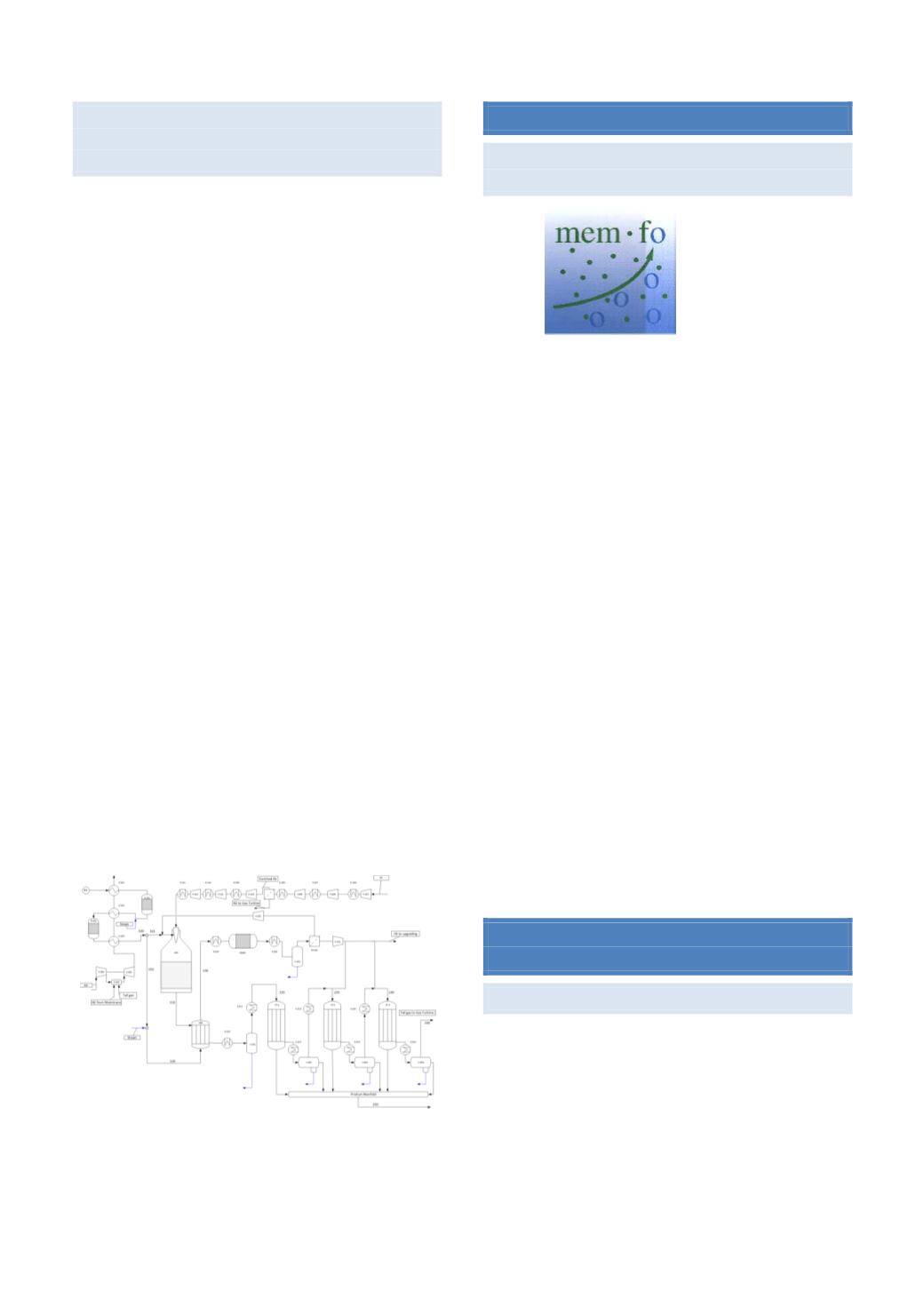

Department of Chemical Engineering
Annual Report 2015
29
GASSMAKS – IMPROVED PROCESS DESIGN AND
OPERATION OF NATURAL GAS CONVERSION
TECHNOLOGIES
A novel process concept is proposed for converting
natural gas to liquid Fischer-Tropsch products. An
autothermal reformer with enriched air as oxidant is
applied for synthesis gas (syngas) production, and
because of the inert nitrogen a once-through Fischer-
Tropsch synthesis is the preferred option. In order to
maximize the syngas conversion and the production of
heavy hydrocarbons, a staged reactor path with
distributed hydrogen feed and product withdraw is
proposed. The hydrogen is produced by steam methane
reforming in a heat exchange reformer (gas heated
reformer), heat integrated with the hot effluent stream
from the autothermal reformer. Tail gas from the last
Fischer-Tropsch stage is sent to a gas turbine for power
production. The hot exhaust gas from the gas turbine is
used for natural gas preheating. The process is
autonomous in the sense that it is self-sufficient with
power and water, and therefore well suited for
production in remote locations such as a floating
production unit. The process concept is simple and
inexpensive since cryogenic air separation and fired
heaters are not required. For the Fisher-Tropsch
synthesis, both the conventional shell and tube fixed bed
reactors and microchannel reactors are considered and
compared. The carbon efficiencies for a once-through
synthesis are calculated to be 57 and 62 % for the fixed
bed and microchannel reactors, respectively. The part of
the energy that ends up in the product is 45 and 50 % for
the fixed bed and microchannel reactors. However, the
fixed bed alternative produces more energy as steam
and power for export.
Results from CO2SIM.
MEMBRANE RESEARCH
MEMBRANES FOR GAS SEPARATION AND
OSMOTIC PROCESSES
Memfo = Membran Forskning (Membrane Research)
The membrane research programs have extensive
activities on basic membrane material development, as
well as membrane gas separation processes, modelling
and simulations. The main focus for the research is CO
2
capture by membranes (from flue gas, natural gas
sweetening, biogas upgrading) and hydrogen recovery
from various mixed gas streams. In addition to this
energy focused gas applications, there is also ongoing
research on membranes for other gas mixtures and
liquid separation The membrane materials in focus are
various types of polymers, nano-composites, carbon
membranes, and modified glass membranes.
The group has several well equipped laboratories
available for the membrane research; both for
membrane material development as well as membrane
characterization. The membrane research on CCS is
especially strong, and completes the research on CCS
activities within the Environmental engineering and
reactor technology group.
The international network is extensive, with co-
operation both within EU-projects, USA, China, Japan,
the Nordic countries and Russia.
BRIEF DESCRIPTION OF SAMPLE GAS
SEPARATION PROJECTS
NORCEM-ECRA/NFR PROJECT
This is a project with pilot-scale demonstration of fixed-
site-carrier membranes for CO
2
capture from the flue gas
in Norcem cement industry by collaboration with DNV GL
and Yodfat Engineers. This project comprises two phases:
a feasibility phase and phase for execution. The feasibility
phase is to test and document the membrane
performance and durability over at least 6 months of
exposure in the flue gas in Brevik cement kilns, while


















